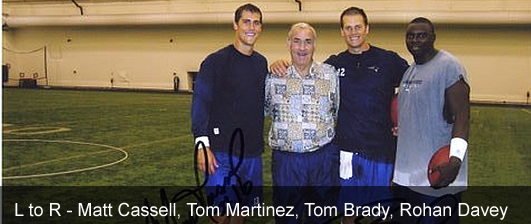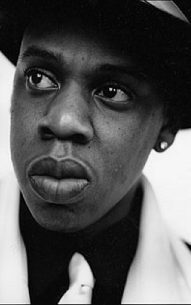
There is a fundamental difference between leaders and managers. The manager will lead her group through the jungle with a machete, hacking away and clearing a path for the group to follow.
A leader, however, will climb the tallest tree and discover that they are actually heading in the totally wrong direction.
(paraphrased from Jim Collins, Good to Great)
Are you blindly working away day after day? Head down in your outlook calendar managing this week’s tasks and your “to-do” lists, delegating cleaning duties and administrative responsibilities or have you taken a moment to climb the tallest tree and discover that the work you’re so busy at on a daily basis is actually keeping you from realizing that you’re heading in the wrong direction?
The challenge of course is putting down the blackberry and looking up long enough to realize that you’re actually trapped in a hamster wheel. Hint: Hacking away will only keep the wheel spinning. The only way to get out is to climb the tallest tree.
Art Horne is the Coordinator of Care and Strength & Conditioning Coach for the Men’s Basketball Team at Northeastern University, Boston MA. He can be reached at a.horne@neu.edu.
Topics:
Art Horne,
Good to Great,
discipline,
development,
Leadership

We’ve all done this at one time or another; walk into a weight room, watch an athlete train, and know exactly who their strength coach was or what strength coach programmed their training.
Whether you know Tony Testa, Director of Sports Medicine at Seton Hall or not, you’d know exactly which kids he taught the Olympic lifts to and which ones he didn’t. Tony is a perfectionist and a first rate teacher of the Olympic lifts, in fact, probably the best I’ve ever seen. Whether he was helping out in the weight room during training or implementing the clean as part of his rehabilitation program, his athletes are a direct reflection of his affection for the Olympic lifts.
With other strength coaches, its bench press Mondays. 10 sets of Bench… doesn’t matter if you have time for anything else.
“I’ve competed in bench press competitions so you’ll bench too.”
On the flip side, you’ll find other “performance coaches” with little actual training experience avoid weights all together.
“It’s all about flexibility. Feel the stretch”
So what exercises are your athletes performing today, or should I say, which ones are they not doing simply because you don’t perform them yourself? Are you looking to fill in the gaps or just simply looking to fill time?
Art Horne is the Coordinator of Care and Strength & Conditioning Coach for the Men’s Basketball Team at Northeastern University, Boston MA. He can be reached at a.horne@neu.edu.
Topics:
Art Horne,
basketball resources,
Strength & Conditioning,
hockey conference,
Ownership,
development,
Leadership

Do you treat your each patient as if they were your daughter?
Do you listen attentively while taking an injury/illness history as if you were listening to your grandmother? Do you welcome each patient into your treatment room with a smile and thank them for stopping in? Do you call your patients after surgery just to make sure they are doing ok – you know, just the way your mother used to with you?
I remember being an athletic training student at Canisius College when I was challenged by my mentor, Pete Koehneke, to treat every patient as if they were his daughter or a family member.
Boy, did my attention to detail quickly change.
How would the quality of your patient care change if you were treating your daughter/son or better yet your boss’ child?
Would you still be texting on your cell while performing that ultrasound treatment? How about the “advice” of rest and ice you gave the long distance runner without examining them first?
Would that change?
What if that track athlete was a family member? Your sister? Your child?
How would you treat your patient then?
Art Horne is the Coordinator of Care and Strength & Conditioning Coach for the Men’s Basketball Team at Northeastern University, Boston MA. He can be reached at a.horne@neu.edu.
Topics:
Ownership,
Health,
Good to Great,
athletic trainer,
customer service,
evidence based medicine,
Leadership

“Almost all the master coaches I met followed Wooden’s rule. They wanted to know about each student so they could customize their communications to fit the larger patterns in a student’s life.”
Famed football coach and quarterback specialist, Tom Martinez, has a vivid metaphor for this process.
“The way I look at it, everybody’s life is a bowl of whipped cream and shit, and my job is to even things out,” he said. “If a kid’s got a lot of shit in his life, I’m going to stir in some whipped cream. If a kid’s life is pure whipped cream, then I’m going to stir in some shit.”
(Excerpt from, The Talent Code by Daniel Coyle)
Looking at some of Tom's successes it's clear his recipe might just be working.
Art Horne is the Coordinator of Care and Strength & Conditioning Coach for the Men’s Basketball Team at Northeastern University, Boston MA. He can be reached at a.horne@neu.edu.
Topics:
basketball performance,
athletic training conference,
Strength & Conditioning,
Sports Pyschology & Mental Training,
The Talent Code,
Daniel Coyle,
autonomy,
development,
Leadership

Its the end of fall camp and everyone is feeling a bit run down at work and lacking the needed umph to muster a smile. May I suggest a quick read that is sure to place a smile not only on your face, but also on the faces of your co-workers and customers. Fish, by Lundin, Paul and Christensen is the true story of The Pike Place Fish Market where fish are tossed from worker to worker and comic relief comes free of charge. For all those that haven't read it the four main points are outlined below and provide for a nice framework to build your day around, in addition to a break from the traditional management style.
1. Choose your attitude
There is always a choice about the way you do your work, even if there is not a choice about the work itself.
2. Play
“We can be very serious about our jobs without being very serious about ourselves” - Fish
3. Make their day
Find someone who needs a helping hand, a word of support, or a good ear – and make their day.
4. Be present
“talk to them as if they were a long lost friend”
- Fish
So go ahead and throw a fish and have some fun at work tomorrow. Just be sure to wash your hands after.
Art Horne is the Coordinator of Care and Strength & Conditioning Coach for the Men’s Basketball Team at Northeastern University, Boston MA. He can be reached at a.horne@neu.edu.
Topics:
basketball conference,
athletic training conference,
Strength & Conditioning,
discipline,
customer service,
development,
Leadership

In a recent post by Seth Godin he challenges one’s normal approach to problem solving which is usually the “wait to be inspired then act” method and asks us to instead actively seek out inspiration.
Seth states, “Simple example: start a blog and post once a day on how your favorite company can improve its products or its service. Do it every day for a month, one new, actionable idea each and every day. Within a few weeks, you'll notice the change in the way you find, process and ship.”
My challenge to you is to take Seth’s example of blogging, but instead of blogging about your favorite company, write down one new actionable idea each and every day this coming month that will improve your department’s service to your student-athletes. It may be as simple as greeting each athlete or patient with a high five as they enter your office or as complex as a new pre-participation exam that actually screens them for risk factors that matter. Or how about an idea that will provide your staff with more opportunities to ship?
Once you’ve committed to writing down these ideas you’ll not only discover there are a number of easy ways to improve your services, but you’ll actually find yourself leading others to the trough of change.
Warning: you can lead a co-worker to water, but you can’t make them drink. But gosh darn it, seeing you drink first makes it a whole lot easier for others to drink the cool-aid.
Art Horne is the Coordinator of Care and Strength & Conditioning Coach for the Men’s Basketball Team at Northeastern University, Boston MA. He can be reached at a.horne@neu.edu.
Topics:
athletic training,
Strength & Conditioning,
motivation,
Ownership,
Good to Great,
discipline,
customer service,
evidence based medicine,
development,
Leadership,
managing
"If I have seen farther than others, it is because I was standing on the shoulders of giants"
- Albert Einstein

SAVE THE DATE
The Boston Sports Medicine and Performance Group is proud to announce a speaking engagement with Dr. Shirley Sahrmann, June 3/4 2011 in Boston. Complete details to follow.
Topics:
basketball conference,
athletic training conference,
Strength & Conditioning,
Health,
Shirley Sahrmann,
movement impairments,
athletic training books,
evidence based medicine,
Leadership

On line resources define Evidence Based Medicine as the following:
ev•i•dence-based med•i•cine
noun
Definition:
treatment based on reliable evidence: the use of clinical methods and decision-making that have been thoroughly tested by properly controlled, peer-reviewed medical research.
Now that we got that out of the way we can move forward with your definition?
The same?
You sure?
No other phrase has infiltrated both sports medicine and strength and conditioning more in the past decade, and for good reason. It guides clinical practice and allows us to allocate resources, time, and personnel towards obtaining best practice. The problem is not with evidence based medicine but with individuals providing “their own definition” in defense of the work they are conducting.
So the next time your co-worker starts ultra-sounding an entire thigh simply ask them what their definition of evidence based medicine is. Hint: we are not allowed to each have our own definition.
Art Horne is the Coordinator of Care and Strength & Conditioning Coach for the Men’s Basketball Team at Northeastern University, Boston MA. He can be reached at a.horne@neu.edu.
Topics:
basketball conference,
basketball training programs,
athletic training conference,
athletic training,
Strength & Conditioning,
Health,
Good to Great,
discipline,
evidence based medicine,
development,
Leadership,
managing

A business friend of mine is always talking about gaps in the market and turning a profit. Always looking to fill only those gaps that have a market and thus place only resources where they are best utilized. In discussing our department and without knowing anything about Sports Performance, the first question he asked me was this,
“Is there a gap in the market? And is there a market in the gap?”
A classic example of a gap in the market was the introduction of the Segway. At the time, and still to this day, there was no machine that enabled a person to stand upright and zip around at a running speed with little or no effort. A clear example of a gap in the market.
The problem that the makers of the Segway ran into was that they never followed up the first question with the second and asked themselves, “Is there a market in the gap?”
Besides a few mall rent-a-cops, the Segway basically was a flop – no market in the gap despite the massive gap in the market.
If you follow the NBA, you’ve no doubt heard the story of Kevin Durant’s failed bench press attempt at the NBA combine his rookie year. Kevin Durant can’t bench 185 lbs; some would say a clear a gap in his physique (market). What many failed to see though, was that there was absolutely no need to fill this gap in Kevin’s physique. Developing Kevin’s physique so that he could bench press 225 lbs, although fulfilling your ego, will not make him play any better… and hence no market in that gap. When examining your athletes both in rehab and performance the question we need to ask when addressing these programs is simple.
Is there a market in their gap? And if not, we need to start putting our resources into gaps that are marketable.
Art Horne is the Coordinator of Care and Strength & Conditioning Coach for the Men’s Basketball Team at Northeastern University, Boston MA. He can be reached at a.horne@neu.edu.
Topics:
basketball resources,
athletic training,
Strength & Conditioning,
Ownership,
Kevin Durant,
discipline,
development,
Leadership,
managing

There's an employee outside of my department that I've known for some years. For pretty much the entire time I have known them they have been telling people they were planning on leaving for greener pastures soon enough. This has been going on for about five years now, but for some reason they have been unable to find a situation that better suits their needs. In the interim, let's just say that they have not been the model of ownership. Sure, they do their job, but along the way they also complain about their responsibilities, their poor compensation, and the state of their department in general to anyone willing to listen. They also fail to understand why it is that they are still stuck in a less than ideal circumstance and are unable to find another job. Hmmm, baffling.
You may recognize it, but the title of this post is taken from a quote by entrepreneur Shawn Carter who you may know better as Jay-Z. Over the years Carter has continually reinvented himself and excelled in every avenue that he's explored. He has gone from being a successful artist to owning a record label, his own major clothing line, a chain of upscale sports bars, and an ever increasing number of other ventures. Carter continually excels because he has the drive to succeed, but also because he understands that his name is a brand. In today's age many artists, athletes and other celebrities continually make poor decisions that ultimately paint their names in a negative light and simultaneously limit their future potential. While many of these people do not fully understand that their name is their brand, Carter grasps the notion that while he is marketing all of his businesses, more importantly he is marketing himself.
What does this have to do with you? Let's forget about the effect your actions have on your workplace for a minute and focus on the effect they have on you. Every decision you make, every meeting you attend, and every conversation you have impacts the way that supervisors, employees, and co-workers perceive you. When you complain about your surroundings, belittle your fellow employees or put forth a mediocre effort you are definitely influencing your image, but is that really the image you want to put forth? Your brand is what ultimately makes the difference between advancing in your profession and continuing to work in a position that is less than your ideal circumstance. You are your own business and you should be marketing yourself accordingly. Shawn Carter knows it. Why don't you?
Shaun Bossio is the Assistant Business Manager and ProShop Manager at Boston University FitRec.
He can be reached at sbossio@bu.edu
Topics:
basketball performance,
athletic training conference,
athletic training,
Strength & Conditioning,
Ownership,
shawn carter,
jay-z,
Good to Great,
discipline,
development,
Leadership












